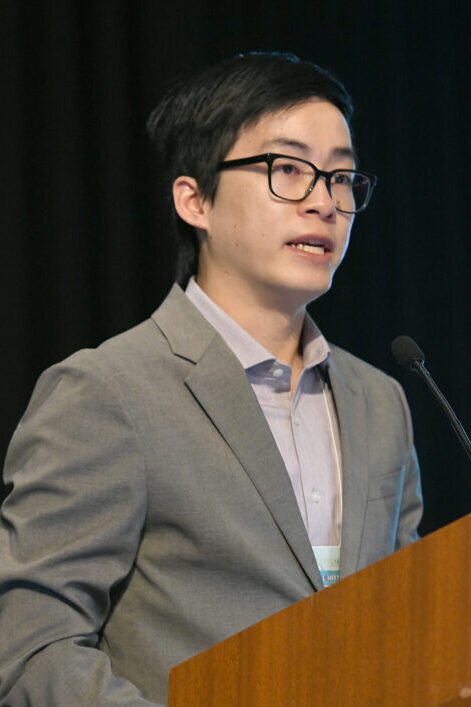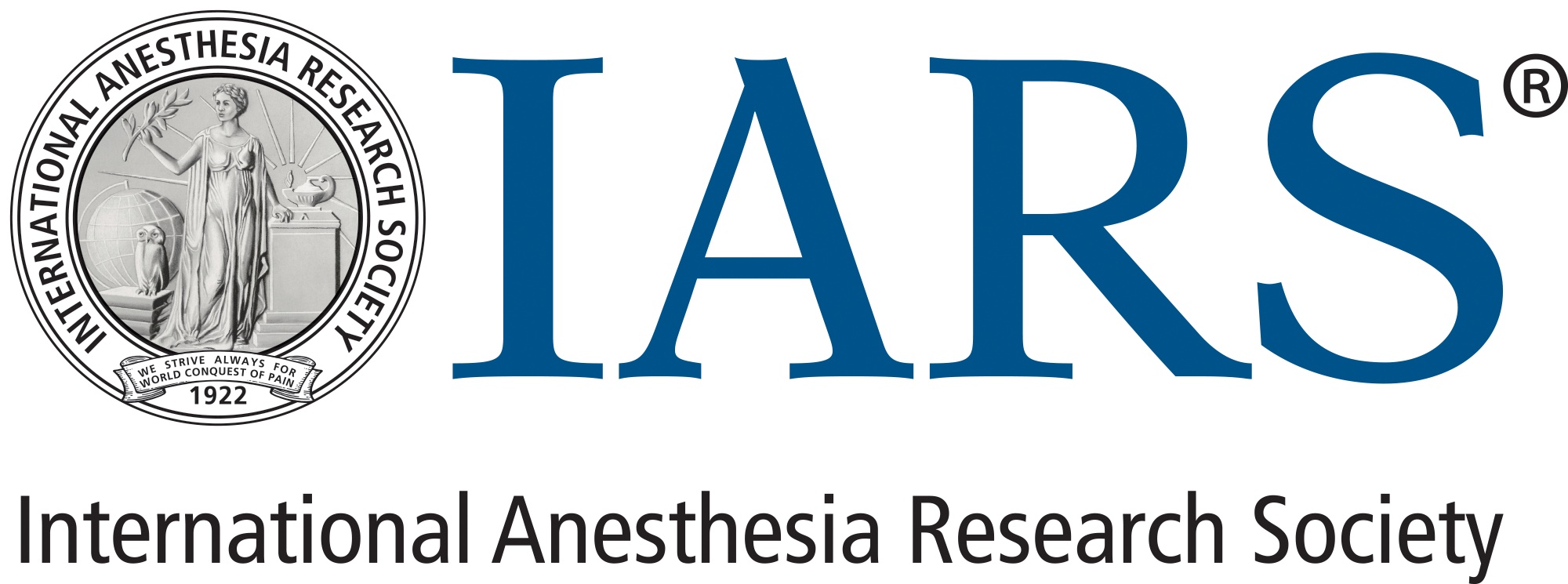2025 Kosaka Top Scholars Abstract Winner Interview: Nicholas Fong
Trends in Volatile Anesthetic Use and Effects on Global Warming Potential: A Multicenter Observational Analysis between 2018 and 2023
 Nicholas Fong
Nicholas Fong
Data Scientist and Medical Student
University of California, San Francisco
San Francisco, CA
In his early teens, Nicholas Fong had a close relative admitted to the ICU at University of California, San Francisco (UCSF) following a cardiac arrest. Nights alone in the ICU with his loved one were difficult, especially when they were facing an uncertain prognosis. However, the dedication, compassion and expertise of the faculty and trainees and the critical care-trained anesthesiologists left a lasting impression on Nicholas. He occupied many sleepless nights with his loved one in the ICU by manually charting their vitals and other clinical data in a database, wondering if hidden patterns in data could provide some insight into whether they would recover and what the right decisions were for their situation. During this time, he began to reflect on his experience watching the staff at UCSF, what would bring him the most career fulfillment and contemplated a career change from a software engineer to an anesthesiologist-intensivist. Nicholas made the decision to return to medical school at the institution where his loved one first received excellent patient care, UCSF.
Now a data scientist and medical student in the Department of Anesthesiology and Perioperative Care at UCSF, Nicholas has put his initial data observations watching his loved one in the ICU to good use, asking whether hidden patterns in data can help clinicians, patients, and their loved ones make better informed decisions. Although his current study, Trends in Volatile Anesthetic Use and Effects on Global Warming Potential: A Multicenter Observational Analysis between 2018 and 2023, is not about clinical decisions, it does focus on a critical issue, the environmental impact of anesthesia and the need to alter habits in the operating room, especially in the context of climate change. Through this investigation and the integration of multicenter data across the United States, his research team has created the most granular and comprehensive dataset on anesthesia emissions, with over 2.7 billion rows of data and 1.9 million anesthesia encounters. The impact of this work was recently recognized with the Kosaka Top Scholars Abstract Award during the “Kosaka Best Abstracts Session,” held on Sunday, March 23, at the 2025 Annual Meeting, presented by IARS and SOCCA. In the following interview, Nicholas reflects on his research and career trajectory, the importance of this area of research and how this award will affect his career and investigations in the future.
1. For this research, I am…
A data scientist
2. What drew you to the anesthesiology specialty?
My interest in anesthesiology was first sparked in my early teens, when a close relative received care from critical care-trained anesthesiologists in the ICU at UCSF following a cardiac arrest. The dedication and expertise of the faculty and trainees left a lasting impression on me, although I had no thoughts of becoming a physician or anesthesiologist at the time. Over the next decade, I continued caring for my family member and was unfortunately regularly exposed to the ICU through their care. After working as a software engineer for some time and working in a multitude of patient care roles on nights and weekends, I introspected and reflected on the experiences that fulfilled me most and thought back to the subtle encouragements of many of the anesthesiologist-intensivists that I’d met over the years to consider whether I’d find fulfillment in medicine. I made the decision to return to medical school with the hope of one day becoming a critical care-trained anesthesiologist myself.
3. What drew you to this area of research?
Nights alone in the ICU with a loved one can be difficult, especially when prognostication is uncertain. During my relative’s first ICU admission, under the glow of the monitor, pumps, ventilator, and my laptop, I occupied many sleepless nights by manually charting their vitals and other clinical data in a database, wondering to myself if hidden patterns in data could provide some insight into whether they would recover and what the right decisions were for their situation. Years later, I find myself working on these types of research questions for the same department that took care of this loved one for so long, asking whether hidden patterns in data that our algorithms detect can help clinicians, patients, and their loved ones make better informed decisions when the stakes couldn’t be higher. I endeavor to build the tools I wish my colleagues had when my loved one was hospitalized and to use data to understand how we can improve patient care in a tangible way. This study in particular is unique because it involves so much granular data: We’re looking at what’s happening at each minute of surgery to understand exactly what the anesthesia provider was doing at every moment during the case, which poses many data management and processing challenges. Although this study is not about clinical decision-making per se, our environmental impact is a critical issue that we must be conscious of, and our need to alter our habits in the OR is a critical issue for all.
4. What are the goals you most want to accomplish in your work with this research project?
In our research, we aim to better understand the impact of anesthesia on the environment, especially in the context of climate change. We know that healthcare contributes to climate change, including but not limited to impacts like increased heat-related illnesses, respiratory issues from pollution, and greater spread of vector-borne diseases. We also know that medicine is accelerating climate change and that anesthetic gases are potent greenhouse gases. However, we still don’t have a clear picture of whether the changes made to anesthetic gas practices in recent years at many institutions have led to a significant reduction in emissions. Through the integration of multicenter data across the US, we’ve created the most granular and comprehensive dataset on anesthesia emissions, with over 2.7 billion rows of data and 1.9 million anesthesia encounters. This allows us to assess whether our efforts to reduce emissions in anesthesia have been effective and identify areas for further improvement. Ultimately, our goal is to inspire anesthesia providers to reflect on the environmental impact of our field and encourage sustainable practices — minimizing waste and promoting green anesthesia whenever possible.
5. What is the potential impact of your research on the field of anesthesia and patient care?
Our study represents the largest and most comprehensive data-driven analysis of anesthesia-related emissions in the United States. By evaluating whether current efforts to reduce anesthesia gas emissions are effective, we aim to provide valuable insights that will hopefully shape future practices in anesthesia, potentially leading to a further significant reduction in the carbon footprint of the operating room. We’ve all taken an oath to do no harm to our patients. This responsibility extends not only to their immediate care but also to the environment that we and our patients are fortunate to share. We hope our research will inspire a broader conversation about and commitment to sustainability in anesthesia and patient care.
6. What are the benefits of presenting your research at the IARS Annual Meeting?
Presenting this research at the IARS Annual Meeting gave our team a collaborative forum to share some preliminary results from our study, to get valuable feedback about our study methodology and results, and to spark conversations about this topic among fellow researchers and clinicians. We are grateful to the entire IARS team for working so tirelessly to host the annual meeting!
7. How do you feel about receiving the Kosaka Best Abstract Award?
It is truly a privilege to be selected as a Kosaka finalist, and I’m deeply honored and humbled to receive the Kosaka Best Abstract Award. This recognition is not just for me, but for my colleagues, collaborators, mentors, and advocates at UCSF who have made this work possible. I am also incredibly grateful to the IARS for providing a platform to share our research and for their continued support of anesthesia research. This award reflects the collective effort of hundreds of people at UCSF and beyond, and I am grateful to be part of such a vibrant, dedicated, and supportive community.
8. How will this award affect your research and professional trajectory?
As a current medical student and aspiring physician-scientist, I hope to integrate my computer and data science skills with medicine to conduct actionable research that ultimately guides patient care, especially at critical junctures in the care of patients in the ICU. Perhaps more importantly though, receiving the Kosaka Award reflects positively on our department and our mission to be the future of healing, teaching, and discovery: the Department of Anesthesia and Perioperative Care at UCSF has a long and storied history of groundbreaking and innovative research. Looking forward, I aspire and hope to play a small role in continuing this legacy one day.
9. Is there anyone else you wish to acknowledge as part of this research team?
There are far too many people to thank for their contributions to this project than we have time to discuss here. To name a few individuals, Seema Gandhi, MD, is UCSF Health’s medical director of sustainability and the principal investigator for this study and is the driving force behind many of our sustainability efforts at UCSF. She is, in many ways, one of the most preeminent faces of perioperative sustainability. Tom Salih, MBBS, has worked tirelessly thinking about how we should approach, validate, frame, and interpret our findings; without him we would have no results to show for it. David Chen, PhD, has volunteered his limited time to help think through and help implement our modeling strategy. Priya Ramaswamy, MD, wrote initial data processing code. The entire team at Michigan, especially Sachin Kheterpal, MD, MBA, and Mike Mathis, MD, made this project possible through their creation of the MPOG registry. Matthieu Legrand, MD, PhD, Romain Pirracchio, MD, PhD, and Judith Hellman, MD, have all served as mentors, advocates, and role models for me and innumerable other trainees in our department. And last but certainly not least, our chair, Michael Gropper, MD, PhD, has consistently supported the faculty and trainees in our department to facilitate research projects and sustainability efforts like these, helping UCSF remain at the frontier of discovery.
“It is truly a privilege to be selected as a Kosaka finalist, and I’m deeply honored and humbled to receive the Kosaka Best Scholars Abstract Award. This recognition is not just for me, but for my colleagues, collaborators, mentors, and advocates at UCSF who have made this work possible. I am also incredibly grateful to the IARS for providing a platform to share our research and for their continued support of anesthesia research. This award reflects the collective effort of hundreds of people at UCSF and beyond, and I am grateful to be part of such a vibrant, dedicated, and supportive community.”
– Nicholas Fong, 2025 Kosaka Top Scholars Abstract Winner
International Anesthesia Research Society
